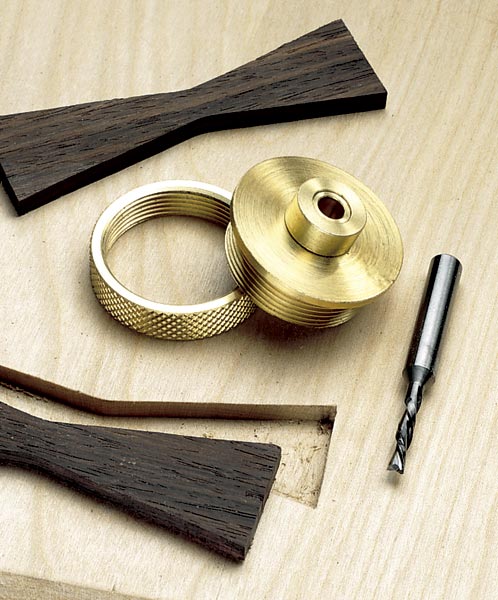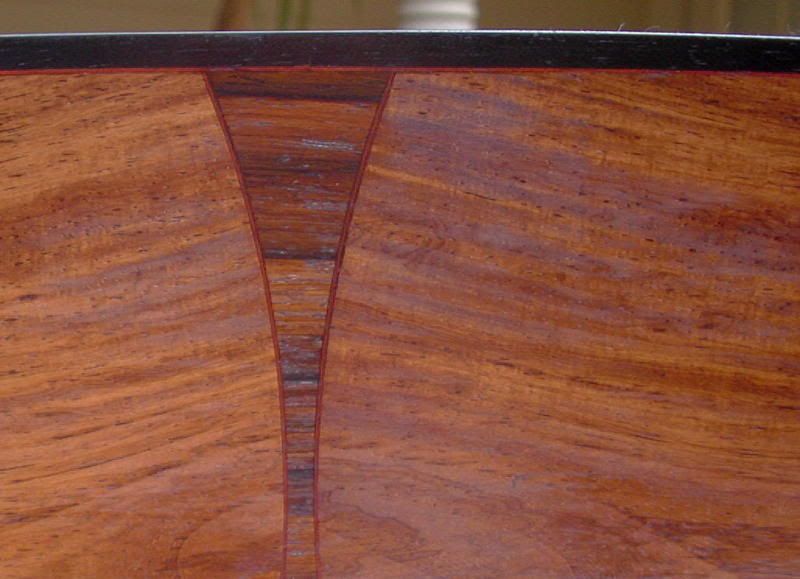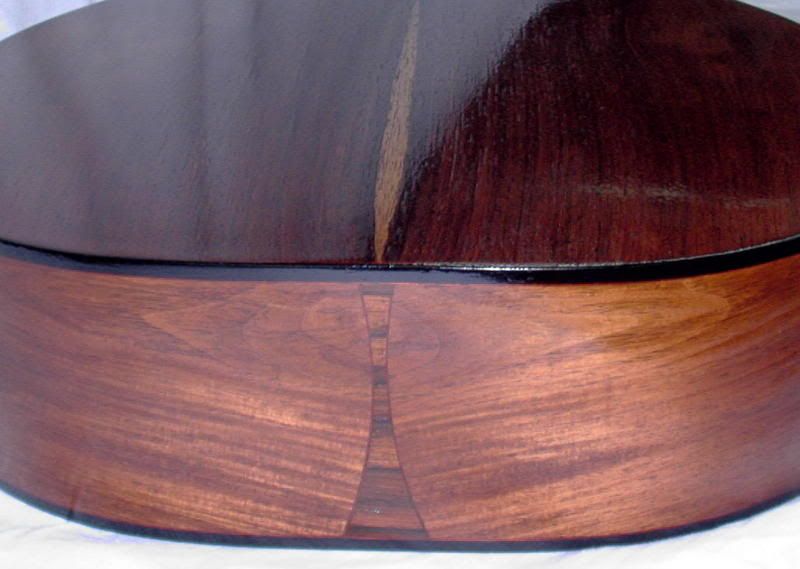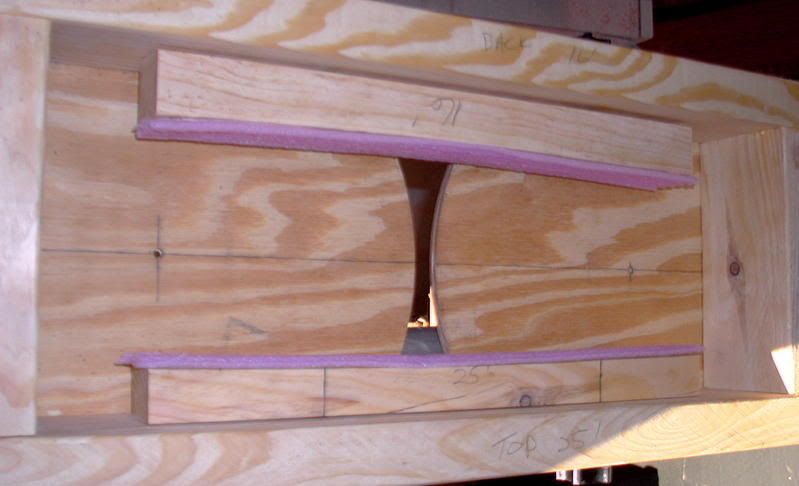I like to use a curved end graft on my guitars, feeling that it's curves compliment the curves on the rest of the instrument.
I cut the first one by hand and it took the best part of a day to get it just right. I've come up with a jig that makes the whole process take less than 15 minutes. In fact a lot less time than it takes to write this tutorial.

It's a pretty simple jig. I had to add a second bit of timber to the piece of plywood in order to get enough depth, so that the flush cutting bit I use, has something to ride against. The dimensions of yours may vary.
You will also notice that I've marked the center line on the jig. It's just a matter of lining it up with the center of your back and top, then snug up the wing nuts on the threaded rods. Double check that everything is right, and then your ready to route the end graft cavity.

I set the depth of cut to just remove the thickness of the sides. You'll notice that I chalk in the direction that I need to route the top and back for the bindings. Anything that helps minimize mistakes in the rush of getting everything just so. The older I get the more I find I need little things as reminders.


I then use the end graft jig to mark out the piece that I'm going to inlay. I had to play with the design a bit to get this to work without a lot of painstaking fitting.
Although the piece is curved, it is actually also a wedge. There is a bit of leeway where the piece will fit. This makes it very easy to get a good tight fit with minimal work.
I have purfling running along the bottom of my bindings and around the end graft. Here I'm holding the purfing tight against the edge of the jig and running a sharp pencil along it. Cut close to the line and finish up by your prefered method. I use a drum sander in my drill press.

Trial fitting. It was a prefect fit first time up.

All glued in and ready to clamp.

Just light clam pressure. I've tapped the "wedge" in so it doesn't need any clamping in that direction.

Scraped flush and trimmed to the top and back, ready for routing of the bindings.

The finished end graft.
To complete the end graft/binding design I set my binding cutter depth of cut to JUST the depth of the binding (not including purfling) and do a pass over the end of the graft plus a little on each side. This is important to do fist, as it it easy to get carried away if cutting the full depth and route the end graft off too deep...don't ask how I know.

Then I reset the depth of cut to include the dept of the purflings, and cut the the binding ledges in the rest of the body, being very careful as I get near the end graft.
I bring the cutter JUST up to the purfling on the side of the end graft.
The miter is then cut with a very sharp chisel, using the polished back of the chisel as a mirror and watching the reflection on the back to tell me when the angle is right. Then make the cut.
For this to work the chisel needs to be really sharp or you'll just mash the purfling.
Hope this is helpful.






 .
.